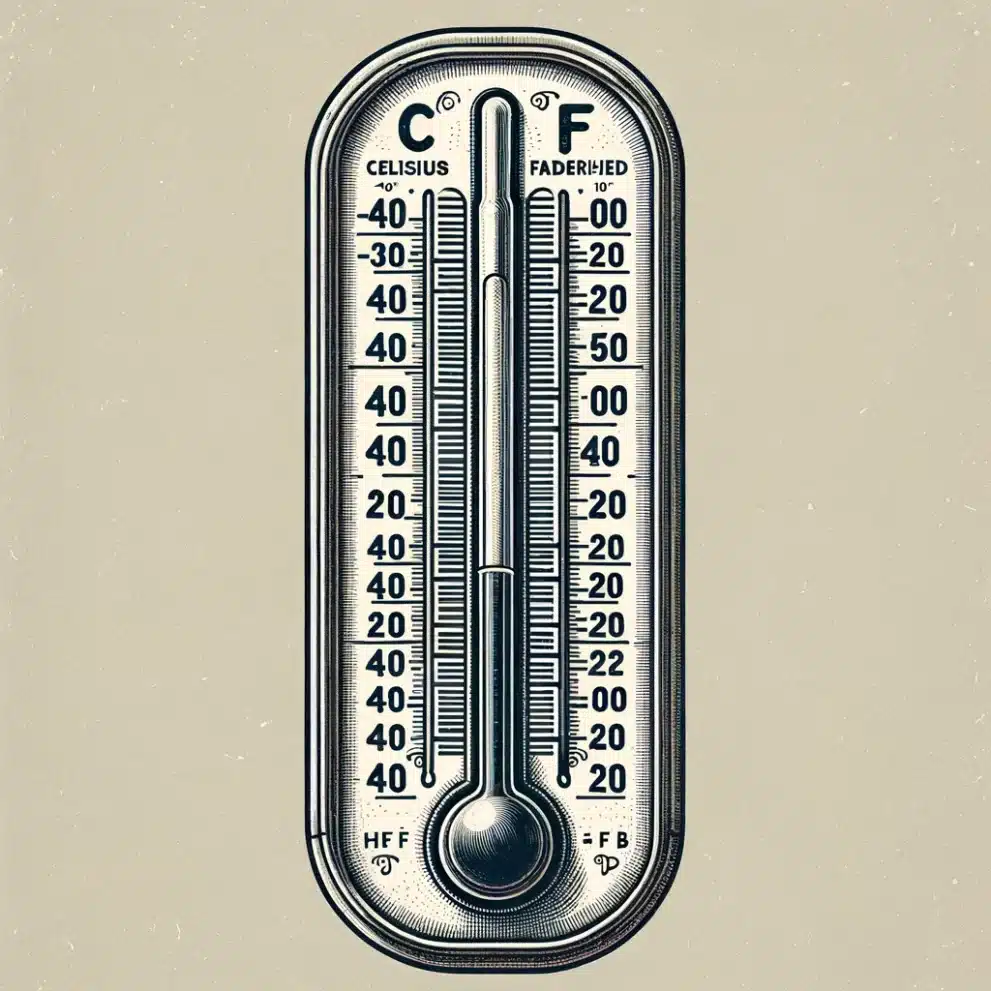
Converting Fahrenheit to Celsius can indeed seem a bit complex at first due to the formula, but there’s a simplified method that can help you make approximate conversions quickly in your head:
- Subtract 30 from the Fahrenheit temperature.
- Divide the result by 2.
This method gives you a rough estimate of the Celsius temperature. The actual formula to convert Fahrenheit (F) to Celsius (C) is:
�=(�−32)×59
But the simplified method gets you quite close with much less mental math. Here’s why it works reasonably well for quick approximations:
- Subtracting 30 accounts for the 32 degrees Fahrenheit offset in the actual formula.
- Dividing by 2 is a stand-in for the actual factor of 5/9. Since 2 is close to 95, this step simplifies the calculation without straying too far from the accurate conversion rate.
Let’s do a quick example:
- If you want to convert 68°F to Celsius using the actual formula, you get �=(68−32)×59=20°�.
- Using the simplified method: (68−30)/2=38/2=19°�, which is quite close and much easier for a quick mental conversion.
Keep in mind this is a shortcut for ease and quick estimates; use the actual formula for precise conversions.
For example, if you wanted to convert 68 Fahrenheit to Celsius, using this formula you would come up with the correct answer, which is approximately 20 degrees Celsius.
The Origins on Celsius and Fahrenheit
The Celsius and Fahrenheit temperature scales have distinct origins, reflecting the scientific and cultural contexts of their times.
Fahrenheit
The Fahrenheit scale was created by Daniel Gabriel Fahrenheit, a German physicist, inventor, and scientific instrument maker, in 1724. Fahrenheit initially set zero degrees as the temperature at which an equal mix of ice, water, and salt could freeze. This method was based on his work to create precise thermometers using mercury, which were more reliable and accurate than alcohol-based thermometers of the time. He then established another fixed point at 32 degrees, the freezing point of water, and finally, 96 degrees as human body temperature (later adjusted to 98.6°F, though individual body temperatures vary). The exact reasons behind these specific numbers (like 32 and 96) involve a mix of scientific experimentation and the limitations of the technology available at the time. Fahrenheit’s scale was widely adopted in English-speaking countries and is still primarily used in the United States for most temperature measurements today.
Celsius
The Celsius scale, also known as centigrade, was proposed in 1742 by Anders Celsius, a Swedish astronomer. Celsius introduced a scale where 0 was the boiling point of water and 100 was the freezing point. This original scale was inverted by Carl Linnaeus, a fellow Swede, shortly after Celsius’s death, to the form we use today, where 0 degrees represents the freezing point of water, and 100 degrees represents the boiling point of water, at standard atmospheric pressure. This change made the Celsius scale more intuitive for daily use. The Celsius scale became popular in Europe and later internationally, as it was easier to use for scientific purposes due to its decimal base. It is now the standard for most of the world and is used in scientific contexts globally.
Both scales were revolutionary because they provided a standard way to measure temperature, facilitating scientific research and daily life activities. Over time, the Celsius scale has become more universally adopted due to its compatibility with the metric system, which is based on units of ten, making it simpler for scientific and international use. The Fahrenheit scale, however, remains in use in a few countries, primarily the United States, for cultural and historical reasons.


 Share
Share Tweet
Tweet Share
Share




Comment